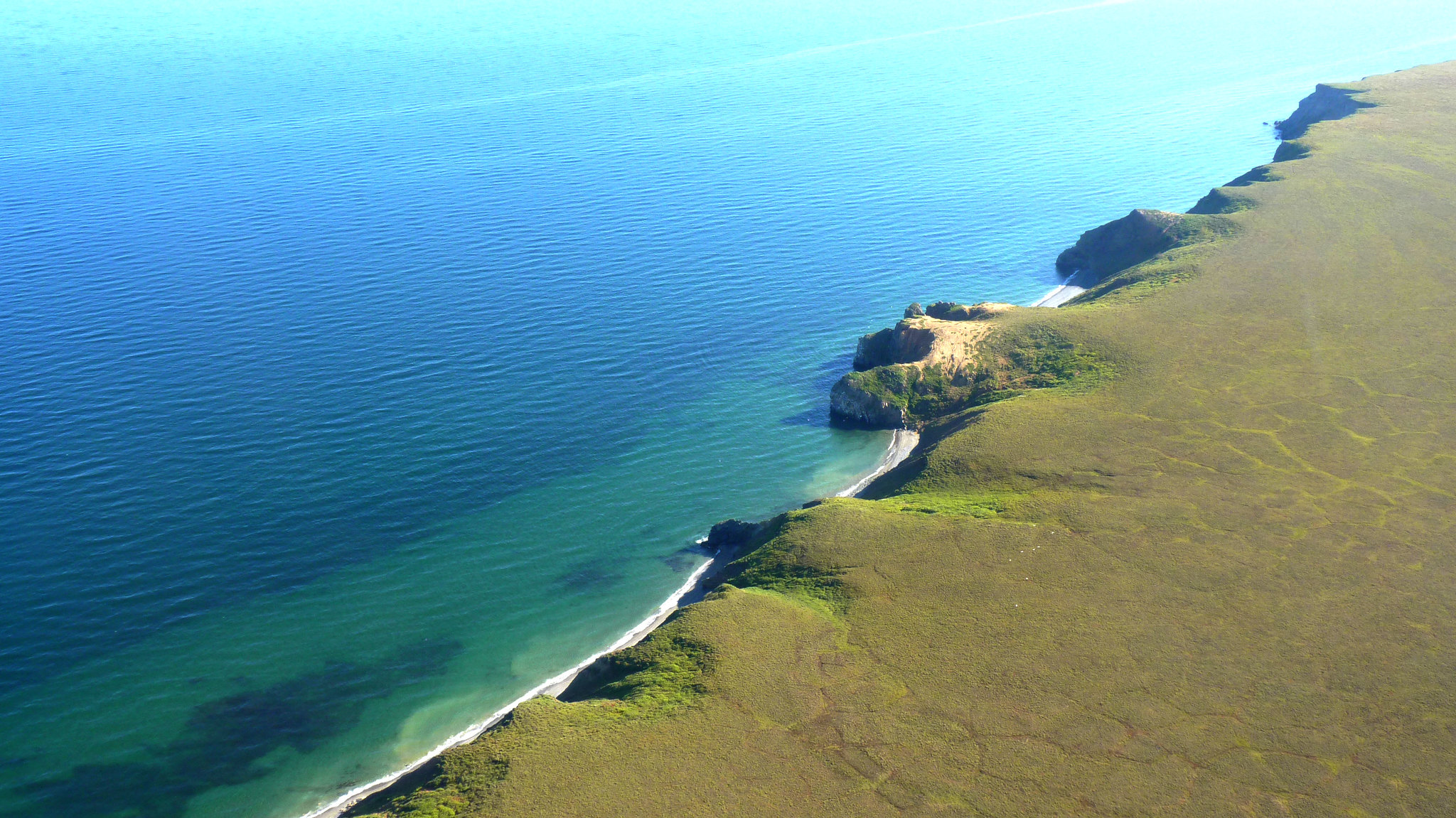Biden’s day one orders revived key protections in Alaska’s northern Bering Sea
The Northern Bering Sea Climate Resilience Area was first enacted by President Obama in 2016, but overturned soon after by President Trump.

A small passage in an executive order issued by the new U.S. president Wednesday was cause for a big celebration among Indigenous people of the northern Bering Sea.
President Joe Biden’s Inauguration Day executive order on environmental protection, public health and science, which paused oil-exploration work in the Arctic National Wildlife Refuge and reversed other Trump policies criticized as environmentally destructive, also resurrected protections for the rapidly changing northern Bering Sea.
The Northern Bering Sea Climate Resilience Area, which mandates new environmental protections and enhanced Alaska Native authority over policies for 112,300 square miles of marine territory, was enacted by an executive order signed by President Obama in December of 2016, near the end of his presidency. It was abolished by President Trump about five months later with an executive order issued at the beginning of his presidency.
Now the designation is back, for which tribal organizations in the region extended their “deepest appreciation and gratitude” to the new president.
“We, the people of the Bering Sea, deserve to be part of decisions that affect our lands, waters, and communities. Quyana, President Biden,” said a statement released by the Bering Sea Elders Group, Kawerak Inc., the Association of Village Council Presidents and the Aleut Community of St. Paul.
The Alaska Federation of Natives, the largest Alaska Native organization, also pushed for the Biden action. “AFN is pleased with the reinstatement of the Bering Sea Resilience initiative. It creates a seat at the table for Native leadership and opportunities to move forward on critical issues,” AFN President Julie Kitka said in an emailed statement. “AFN did raise this issue with the Biden transition teams on several occasions.”
The Northern Bering Sea Climate Resilience Area program was the product of years of planning and work by the tribal organizations. It set out a series of mandates, including programs to enhance shipping safety and prevent oil spills; boost scientific study of the region — including traditional and Indigenous science — and study of the impacts of human activities in the increasingly ice-sparse sea; and, most importantly to the tribal organizations that pushed for the designation, formalized requirements for tribal and Native consultation. A key part of the executive order signed by Obama in 2016 was the establishment of a Bering Sea Intergovernmental Tribal Advisory Council to help guide policy decisions in the region.
The cascading impacts of Bering Sea climate change merit the special protective measures and Indigenous involvement in management, the tribal organizations said in 2016, when Obama signed the original executive order. On Thursday, they reiterated that sentiment.
“The rapidly changing climate and the associated loss of sea ice in the Bering Sea have drastically impacted our hunting and fishing opportunities and our food security. We are bearing witness directly and experiencing the negative impacts of this reality daily. As the Bering Sea becomes ice free, increased shipping, pollution, the potential for offshore oil and gas drilling, large-scale mining, destructive commercial fisheries that trawl the bottom of the ocean floor, and the introduction of invasive species threaten our food security, cultures, and communities,” said their statement released Thursday.
Among the visible changes is increased industrial ship traffic in the Bering Strait, the Pacific gateway to the Arctic Ocean. Just this month, a tanker carrying liquefied natural gas traveled from the Yamal LNG project in northwestern Siberia across the Northern Sea Route off Russia’s northern coast and south through the Bering Strait — all without an icebreaker escort, a first for January.
The reinstated order also addresses offshore oil development by permanently withdrawing the northern Bering Sea area from the federal offshore oil leasing program. The area, though important for shipping, fishing and other commerce, is not considered prospective for oil. Tribal organizations were taken aback in January of 2018 when the Trump administration proposed a sweeping new offshore leasing program that would have opened almost all federal waters off Alaska — including the Bering Sea — to oil drilling. That Trump leasing plan never went into effect. In 2019, a federal judge in Alaska blocked the Trump administration’s efforts to unilaterally scrap Obama-era protections and open up new offshore areas to drilling.
The ups-and-downs of the Northern Bering Sea Climate Resilience Area have convinced the tribal organizations that they need to move beyond support through executive order.
In their statement, the groups said they are eager to get to work but that they also “urge Congress to pass complementing legislation to provide permanent protections for the Northern Bering Sea Climate Resilience Area, so that our home waters are not used as a political football from administration to administration.”